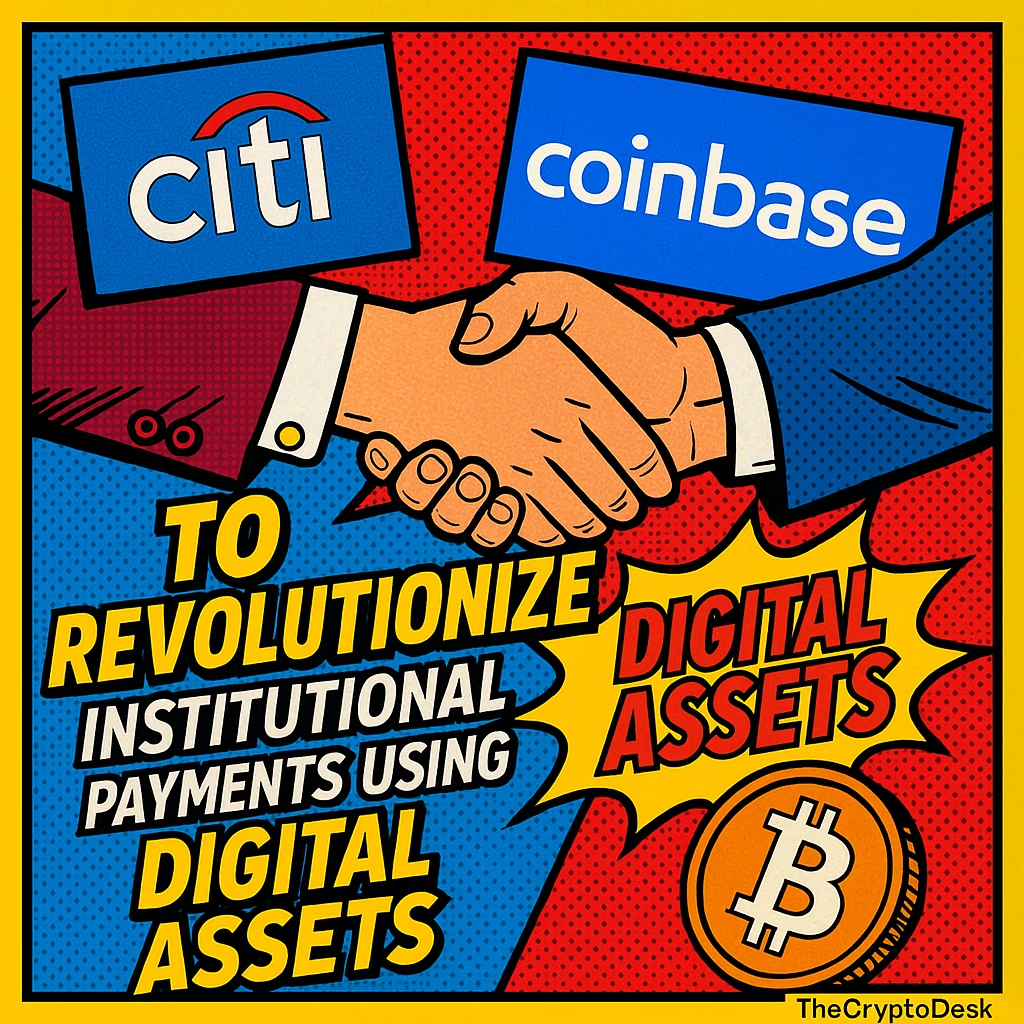In a groundbreaking move that could reshape the landscape of institutional finance, Citi and Coinbase have joined forces to develop cutting-edge digital asset payment solutions. This partnership marks a significant step towards integrating traditional finance infrastructure with the burgeoning world of cryptocurrencies, bridging the gap between fiat and digital assets. As we delve into the implications of this collaboration, we find ourselves at the intersection of innovation and the evolving needs of institutional clients.
At the heart of this exciting venture lies a shared vision of transforming payment systems, particularly for organizations that require seamless transactions around the clock. The collaboration aims to first streamline processes for moving between fiat and crypto before expanding into comprehensive payment orchestration, paving the way for real-time settlement options that could drastically improve efficiency.
“We’re collaborating with @Citi to build the future of payments. → Exploring making it easier for Citi clients to use digital assets → Unlocking the power of stablecoins for payments → Improving on and off-ramps. Time to make digital assets an integral part of the global economy.” — Coinbase 🛡️ (@coinbase) October 27, 2025
So, why does this matter? As institutional interest in cryptocurrencies soars, the demand for reliable and efficient financial tools has never been more pressing. Clients are searching for solutions that allow for constant accessibility, enabling them to execute trades in real-time while managing payments effortlessly. Fulfilling this requirement is paramount for maintaining competitive advantage in a fast-paced market.
Debopama Sen, the head of payments and services at Citi, elaborated on this vision, noting that their extensive global network comprises over 300 payment clearing systems across 94 markets. This partnership with Coinbase is not just an enhancement; it’s an essential evolution towards achieving a “network of networks” that meets the needs of clients seeking borderless transactions. She emphasized, “Clients want payments that feel borderless and run 24 hours a day,” underscoring the demand for a more integrated financial ecosystem.
🔥 **Expert Insights**
Brian Foster, Coinbase’s Global Head of Crypto as a Service, echoed this sentiment, describing the collaboration as pivotal to laying the groundwork for the next generation of financial services. He stated, “Citi’s global network and expertise in payments make them an ideal partner as we work to advance digital asset capabilities.” This partnership, aimed at simplifying institutional access to digital asset payments, highlights the growing intersection of fintech and traditional banking.
As stablecoins continue to gain momentum within corporate frameworks, Citi has noted a rising demand for features like programmability, conditional payments, and improved transaction efficiency. Stablecoins—essentially digital currencies pegged to stable assets like the U.S. dollar—could serve as a critical tool for facilitating these advancements. Sen pointed out that integrating on-chain stablecoin payments can significantly enhance the functionality available to clients.
🚀 **Future Outlook**
What does the future hold for this collaboration? For many in the crypto space, the challenge has often been reconciling the instantaneous nature of trading with the sluggishness of traditional funding methods. Transfers through conventional banking rails, like ACH and wire transfers, can take far too long, introducing significant risks and inefficiencies. By creating a smoother bridge between fiat accounts and tokenized dollars, this partnership aims to eliminate delays, reduce costs, and enhance the overall trading experience.
Citi’s recent advancements, including the rollout of Citi Token Services and 24/7 USD clearing for institutional clients, position the bank as a leader in this emerging financial frontier. With a client roster that includes 90% of the largest e-commerce companies and many of the world’s top fintechs, there’s a promising distribution network for these innovative payment options.
For Coinbase, establishing deeper banking connectivity will enable the conversion of growing crypto demand into tangible payment flows. By streamlining on and off-ramps, they can significantly lower the barriers for treasurers and compliance teams, making it easier to adopt and integrate digital assets into existing workflows. If stablecoin payouts become a reality, we could witness near-instant settlements, complete with clearer audit trails that far surpass traditional settlement methods.
As competition intensifies among stablecoins and tokenized deposits aiming to revolutionize digital payments, the stakes have never been higher. Enhanced custody solutions, real-time attestations, and robust compliance tools are increasingly being demanded from large issuers. The collaboration between Citi and Coinbase could very well catalyze the mainstream adoption of stablecoins, enabling institutions to integrate these digital assets without the cumbersome need to rebuild their core systems from scratch.
This collaboration is not just a technical innovation; it represents a shift in how finance operates in the digital age. With the right infrastructure in place, digital assets can become a fundamental component of global transactions, paving the way for new opportunities across various sectors. As we observe these developments, one has to ponder: is this the dawn of a new financial ecosystem? Only time will tell.
For more insights on the evolving world of cryptocurrencies and their integration into traditional finance systems, be sure to follow our in-depth coverage.
